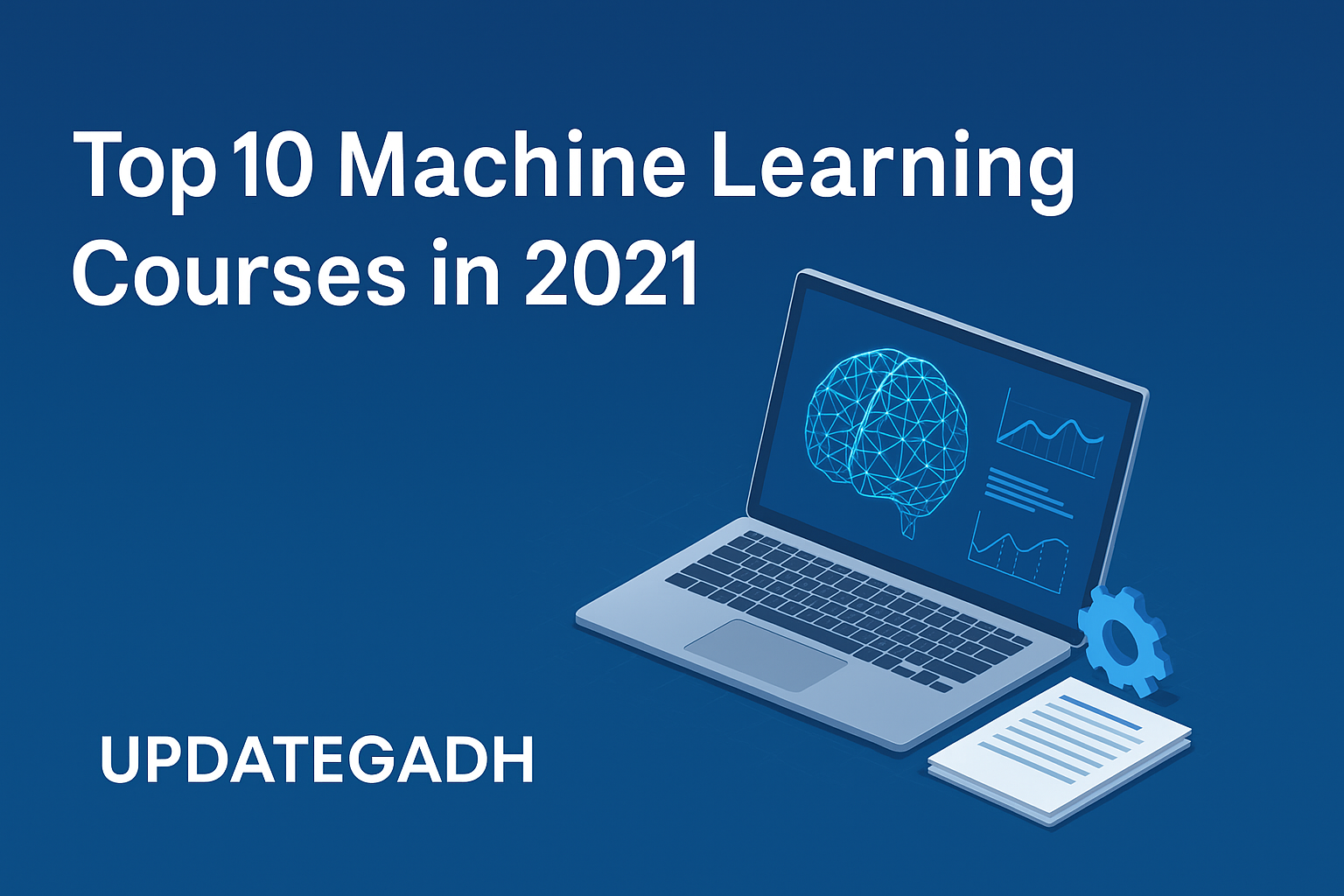
Ways To Improve The Accuracy Of ML Model
Ways To Improve The Accuracy Of ML Model
In the ever-evolving world of machine learning (ML), achieving high model accuracy isn’t just a nice-to-have—it’s critical. Whether you’re working on classification, regression, or more complex predictive tasks, accuracy defines the reliability and success of your models. At UpdateGadh, we believe strong models begin with smart strategies. Here, we break down ten practical and proven ways to improve ML model accuracy.
Complete Python Course with Advance topics:-Click Here
SQL Tutorial :-Click Here
Data Science Tutorial:-Click Here
1. Enhance Data Quality and Quantity
Data is the foundation of every machine learning projectEvery machine learning endeavour starts with data. Better data leads to better models.
📈 Increase Data Volume
More data provides models with more learning examples. Especially in deep learning, large datasets help capture subtle patterns and improve generalization.
🧹 Improve Data Quality
Clean, consistent, and complete data is non-negotiable. Handle missing values, fix inconsistencies, and remove outliers. Quality over quantity always pays off.
2. Feature Engineering and Selection
The features you feed into a model directly influence its performance.
🛠 Feature Engineering
Create new features, transform existing ones, and scale numerical inputs. Techniques like normalization, one-hot encoding, and polynomial feature creation can unlock hidden insights.
🔍 Feature Selection
Keep only the most relevant features. Use methods like:
- Correlation analysis
- Recursive Feature Elimination (RFE)
- Mutual Information Scores
This speeds up the model training process and helps to reduce noise.
3. Choose the Right Model
Not every model fits every problem. Choosing the right one is crucial.
🧪 Try Multiple Algorithms
Experiment with linear models, decision trees, SVMs, and neural networks. Different kinds of data are better suited for the capabilities of each algorithm.
🤖 Use Ensemble Methods
Combine multiple models using:
- Bagging (Random Forest)
- Boosting (XGBoost, LightGBM)
- Stacking
These techniques often lead to improved accuracy.
4. Tune Hyperparameters
Hyperparameters control how a model learns. Tuning them can make a world of difference.
🔧 Grid Search
Exhaustively searches all possible combinations of hyperparameters.
🎲 Random Search
Randomly samples combinations. More efficient in large search spaces.
📊 Bayesian Optimization
Uses probability models to predict the best set of hyperparameters. Excellent for intricate models with lots of parameters.
5. Apply Regularization
Avoid overfitting and keep models generalizable.
🧮 L1 and L2 Regularization
Reduce the weights of less significant features by adding penalties to the loss function.
- L1 (Lasso): Promotes sparsity, helpful for feature selection.
- L2 (Ridge): Helps keep weights small without eliminating them.
💧 Dropout (For Neural Networks)
Randomly disables neurons during training. This keeps the model from depending too much on particular paths, which enhances generalisation.
6. Use Cross-Validation
Reliable evaluation matters. Cross-validation gives a more honest picture of how your model will perform on unseen data.
📚 K-Fold Cross-Validation
Split data into K folds. Train on K-1 and validate on the remaining. Repeat K times for a better average estimate.
🎯 Stratified Cross-Validation
Keeps class distributions balanced across folds—especially important for imbalanced datasets.
7. Leverage Data Augmentation
When collecting new data isn’t feasible, generate more from what you have.
🧪 Synthetic Data Creation
For images, use flips, rotations, noise, etc. For text, try synonym replacement or back translation. For audio, use speed shifts or pitch modulation.
⚖️ Oversampling/Undersampling
Techniques like SMOTE can generate new minority class examples to balance datasets and boost model performance.
8. Explore Advanced Techniques
Push performance boundaries using modern ML innovations.
🔁 Transfer Learning
Start from pre-trained models (like ImageNet for vision tasks) and fine-tune them for your problem—especially useful for small datasets.
🧠 Active Learning
Let the model request labels for data points it’s unsure about. This improves learning efficiency.
🌓 Semi-Supervised Learning
Combine labeled and unlabeled data to improve performance without the high cost of labeling everything.
9. Improve Interpretability & Debugging
Understanding your model can lead to actionable improvements.
🔍 Model Inspection
Use tools like SHAP and LIME to understand which features influence predictions.
🧩 Error Analysis
Dive into the mistakes. Are errors due to specific data segments? Mislabeling? This insight can drive better data collection or feature engineering.
10. Monitor and Maintain the Model
ML isn’t a “train once and done” game. Continuous oversight is essential.
📉 Detect Model Drift
Data changes over time. Monitor model inputs and predictions to catch distribution shifts early.
🔁 Retrain Regularly
Update your model with fresh data to maintain accuracy and adapt to evolving conditions.
🔐 Ensure Security and Compliance
Stay aligned with data regulations and secure your model against adversarial attacks.
Download New Real Time Projects :-Click here
Complete Advance AI topics:- CLICK HERE
✅ Conclusion
Improving model accuracy isn’t about one silver bullet—it’s about a comprehensive strategy. From data preparation and model selection to regularization and ongoing monitoring, every step in your pipeline matters. By applying these techniques, you’ll be well-equipped to build high-performing, robust, and reliable ML systems.
👉 Stay tuned with UpdateGadh for more insightful ML guides, tutorials, and real-world case studies!
ways to improve the accuracy of ml model in deep learning
how to improve accuracy of deep learning model
how to increase accuracy of model
improving accuracy of the linear regression model in machine learning
improving performance of a model in machine learning
model tuning helps to increase the accuracy
techniques to improve classification accuracy in data mining
how to increase accuracy of an experiment










Post Comment